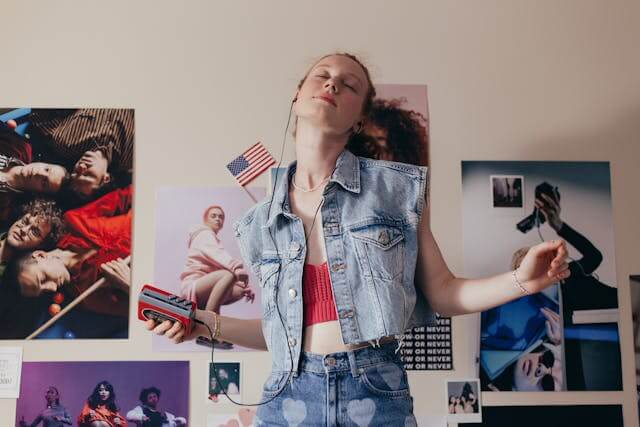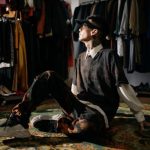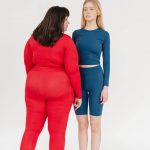The 1990s was a decade of significant cultural shifts, and the fashion of the era reflected the changing attitudes and tastes of the time. Today, vintage 90s clothing has made a remarkable comeback, captivating fashion enthusiasts, designers, and everyday individuals alike. The appeal of 90s fashion lies not only in its nostalgic value but also in its unique ability to blend grunge, minimalism, and bold experimentation into a style that remains relevant and influential in modern fashion.
The Grunge Movement
One of the most iconic fashion trends of the 90s was the grunge movement, which originated in the Pacific Northwest, particularly in Seattle. Bands like Nirvana, Pearl Jam, and Soundgarden not only shaped the sound of the decade but also its style. Grunge fashion was characterized by its laid-back, anti-establishment ethos. Key pieces included oversized flannel shirts, ripped jeans, combat boots, and band t-shirts. This style was a rebellion against the polished and glamorous looks of the 1980s, embracing a more rugged and unkempt aesthetic.
The appeal of grunge fashion today lies in its authenticity and comfort. Vintage 90s grunge pieces are highly sought after, with many fashionistas searching for that perfect worn-in flannel or distressed denim. The layering of clothing, a hallmark of grunge, allows for creative expression, making it a versatile style that can be adapted to different personal tastes.
Minimalism and Normcore
While grunge dominated one side of the 90s fashion spectrum, minimalism and normcore were prominent on the other. The minimalist movement in fashion emphasized clean lines, neutral colors, and simple, functional designs. Designers like Calvin Klein and Helmut Lang were pioneers of this aesthetic, creating collections that were understated yet elegant. The 90s minimalism was a response to the excess of the previous decade, focusing on quality over quantity and timelessness over trendiness.
Normcore, a term that would be coined much later, also has its roots in the 90s. It celebrates the ordinary, with a focus on unpretentious, everyday clothing. Think of plain white t-shirts, straight-leg jeans, and comfortable sneakers. This style was, and continues to be, a statement of individuality in a world obsessed with standing out. The irony of normcore is that by embracing the mundane, it became a fashion statement in itself.
Today, the influence of 90s minimalism and normcore can be seen in the resurgence of brands like Levi’s, Champion, and Adidas, all of which were staples of the decade. Vintage pieces from these brands are highly coveted, not just for their nostalgic value but also for their enduring style and quality.
Bold Experimentation and Streetwear
The 90s was also a decade of bold experimentation in fashion. Streetwear began to take shape, with brands like FUBU, Karl Kani, and Tommy Hilfiger leading the way. This era saw the rise of oversized silhouettes, bright colors, and bold logos. Hip-hop culture had a significant influence on 90s streetwear, with artists like Tupac Shakur and Aaliyah becoming style icons. The fusion of sportswear and high fashion also gained momentum during this time, with brands like Nike and Reebok collaborating with designers to create innovative and stylish clothing.
The revival of 90s streetwear in recent years has been nothing short of phenomenal. Vintage pieces from this era are now considered collectible, with some fetching high prices in the resale market. The bold logos, oversized fits, and unique designs of 90s streetwear continue to inspire modern fashion, influencing contemporary brands and designers.
The Role of Pop Culture
Pop culture played a significant role in shaping 90s fashion. Television shows like Friends and The Fresh Prince of Bel-Air showcased the diverse styles of the decade, from Rachel Green’s preppy-chic outfits to Will Smith’s colorful and eclectic wardrobe. Movies like Clueless and The Matrix also left a lasting impact on fashion, with Cher Horowitz’s plaid skirts and Neo’s sleek leather trench coat becoming iconic.
Celebrities of the 90s, including Kate Moss, Naomi Campbell, and Kurt Cobain, further popularized the decade’s fashion trends. Their influence extended beyond the runway and the stage, permeating everyday style and solidifying the 90s as a defining era in fashion history.
The Sustainable Appeal of Vintage 90s Clothing
In addition to its style appeal, vintage 90s clothing is also celebrated for its sustainability. As consumers become more aware of the environmental impact of fast fashion, the demand for vintage and second-hand clothing has increased. Vintage 90s pieces offer a sustainable alternative to new clothing, allowing individuals to reduce their carbon footprint while still enjoying unique and stylish fashion.
The quality of clothing from the 90s also contributes to its longevity. Many pieces were made to last, with durable fabrics and craftsmanship that stand the test of time. By choosing vintage 90s clothing, consumers are not only embracing a timeless style but also making a conscious choice to support sustainable fashion practices.
Conclusion
The resurgence of vintage 90s clothing is more than just a trend; it’s a testament to the enduring appeal of a decade that was rich in cultural and fashion diversity. Whether it’s the rebellious spirit of grunge, the clean lines of minimalism, the bold experimentation of streetwear, or the influence of pop culture, 90s fashion continues to inspire and captivate. For those looking to embrace this iconic era, vintage 90s clothing offers a unique opportunity to connect with a time when fashion was all about self-expression, creativity, and authenticity.



